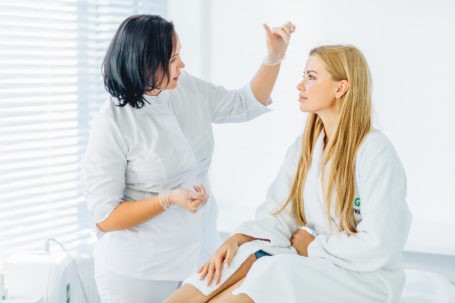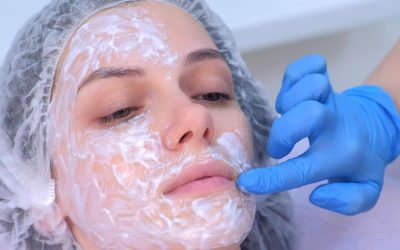7 Scary Truths About Tanning Beds
Last updated on September 17th, 2019
 Due to effective public awareness campaigns, most everyone knows that tanning beds cause cancer and are basically bad for you, right? Then why are 30 million Americans still visiting tanning beds every year?
Due to effective public awareness campaigns, most everyone knows that tanning beds cause cancer and are basically bad for you, right? Then why are 30 million Americans still visiting tanning beds every year?
Every year in the U.S., the tanning industry is making over $5 billion even with the growing risk of skin cancer.
If you think you know everything there is to know about the dangers of tanning beds, think again. The U.S. Food and Drug Administration recently announced they are updating tanning beds and sunlamps from a Class I to a Class II medical device after years of studying their effects on the skin. The FDA will also enforce manufacturers’ acknowledgement of cancer risks in its product information and add warning labels.
 “Although some people think that a tan gives them a ‘healthy’ glow, any tan is a sign of skin damage,” Sharon Miller, a FDA scientist and international expert on UV radiation and tanning, said in a press release.People who live at higher elevations need to be particularly careful about these warnings because of the higher vulnerability of skin cancer.
“Although some people think that a tan gives them a ‘healthy’ glow, any tan is a sign of skin damage,” Sharon Miller, a FDA scientist and international expert on UV radiation and tanning, said in a press release.People who live at higher elevations need to be particularly careful about these warnings because of the higher vulnerability of skin cancer.
The most important thing to do to protect oneself against skin cancer is to minimize exposure to harmful UV rays, except when medically necessary. Here are some other facts about tanning if you’re on the fence about quitting your UV habit.
7 Truths About Tanning Beds
1. Tanning beds increase your risk of melanoma — by a lot
There’s a myth floating around that UV light from tanning beds doesn’t cause cancer. Studies show that people exposed to UV light by tanning beds increase their risk of developing melanoma by 75 percent. Another study found it can make a person three times more likely to get melanoma. Melanoma is the second-most common cancer for women ages 20-29, the highest demographic of tanning bed consumers.
The FDA is particularly concerned about teens using tanning beds. 2.5 million teens use a tanning bed every year, and some are as young as 13. The sunburns that occur from the tanning beds add tremendously to their risk. Women who have at least five sunburns that blistered while in their teens are more likely to develop skin cancer.
2. Tanning beds are a Class II medical device
The FDA raised the classification level for tanning beds and sunlamps, but what does that mean? Instead of being labeled as low-risk, they will now be labeled as a moderate-risk medical device. The devices also have to have a black box warning label, the FDA’s strongest warning, that said children 18 years and younger should not use the device.
3. Tanning beds may be more dangerous than the sun
U.S. skin cancer statistics
70% of tanning bed users are Caucasian girls and women, aged 16-29 years old. These are the women who have the highest risk skin type for getting cancer.
32% of girls in the 12th grade use tanning beds.
Indoor tanning is associated with about 419,000 cases of skin cancer each year.
Over 1 million people use tanning beds every day.
Your risk of melanoma increases 59% with your first tanning bed use, and the risk increases each time you use it.
4. There’s no such thing as a safe tan
Tan skin is damaged skin. There is no such thing as a safe ‘base tan’ to avoid sunburn. Any amount of color on your skin from the sun is sun damage.
The best way for people to protect their skin on their beach vacation is to use sunscreen with at least an SPF of 30 and to limit time in direct sunlight. The best ingredients to stave off both UVA and UVB effects are mexoryl, zinc and avobenzone.
5. Tanning causes wrinkles and leathery skin
That “healthy glow” that people are trying to achieve is merely sun damage. The color they have now will manifest later in the form of wrinkles, leathery skin and cancer. A good alternative is non UV spray tans, lotions and wipes.
6. Tanning without eye protection can damage eyesight
Lying in a tanning bed without protective goggles increases the risk of eye damage. Eyelids are thin and fragile and they require substantial protection to block out the sun. You should always wear quality sunglasses in the sun that have good UV protection. Ocular cancer is rare but does occur so yearly exams are recommended by an opthalmologist.
7. Tanning salon operators may not be telling you the whole truth
Remember these people are running a business and trying to make money. Their goal is to push tanning packages, beds that give you a better tan, ‘safer’ beds, and skin care products. None of it is safe. Period.
Find certified Dermapen microneedling professionals
Dermapen® Microneedling Devices are exclusively sold to Medical and Skin Care Professionals. Use the form to the right to get started finding a Certified Dermapen® practitioner in your area.
Enter your location information to find a Dermapen Skin Care Professional.
Error: Contact form not found.
Want to become a Dermapen Practitioner?
Medical Clinics and Spas can offer their patients the worlds most advanced microneedling treatments with Dermapen
Microneedling Treatments
The Dermapen Microneedling Pen provides an unparalleled response through the segmented delivery of microneedles, creating micro injuries to the epidermis (outer layer of skin) and dermis (the inner layer of skin). As a result, the micro injuries encourage the body’s innate ability to repair itself.
Every Dermapen tip is outfitted with 12 needles and features our patented technologies, which include SureSpace™ and SafLok™. Accordingly, these safety enhancements can be found in every Dermapen needle tip and pen.
Furthermore, by using SureSpace™ and SafLok™ microneedling pen technologies, practitioners can deliver their patients the safest microneedling treatment possible, while getting the best microneedling results for their patients.



